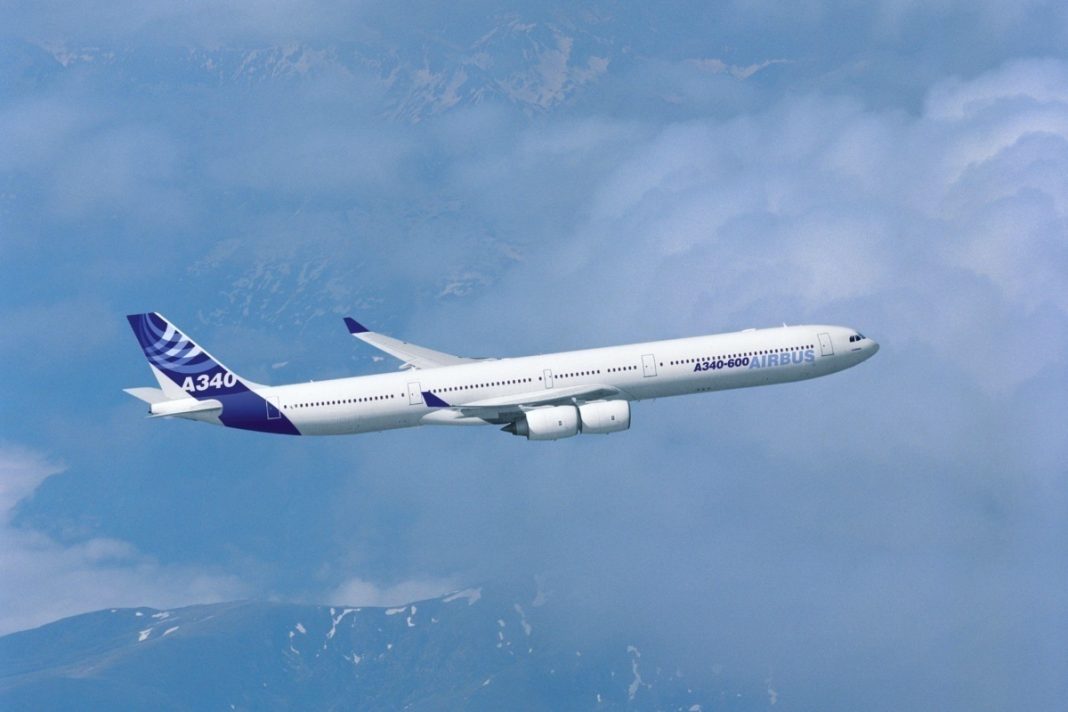The two second-generation A340s, the A340-500 and A340-600, brought to the table larger passenger numbers and a bigger range. But what is the difference between them? Let’s explore.

Why was the A340 second generation built?
Originally the A340 started alongside the A330 series as a long-range aircraft that could cross vast oceans (perfect for Asian customers like Singapore and Cathay Pacific). However, after a few years, Boeing then brought to the market the Boeing 777 series that competed for the same market.
Airbus saw a way to simultaneously compete with Boeing’s 777 and nibble the Boeing 747 market by introducing a large A340 with a longer range. More than just a stretch of the current A340 airframe, this new model would also have more significant engines that could power them for longer ranges and seriously put Airbus on the map.
During development, Airbus decided that the new A340 would divide into two models, one focusing on passenger and cargo capacity, and the other focusing on the range. Let’s have a look at the differences.

Passengers
When it comes to passengers, the A340-600 has room for them in spades. This is thanks to its incredible length:
- 12 m (39 ft 4.4 in) more extended the A340-300
- 4 m (13 ft 1.5 in) longer than the Boeing 747-400
- 2.3 m (7 ft 6.6 in) longer than the A380
- It was the world’s longest commercial aircraft until the Boeing 747-8.
It can fit 320 to 370 passengers (or 475 in high-density seating) across its single deck and can fit around 25% more cargo than the Boeing 747-400 (in its cargo deck, not as a freighter). This placed the A340-600 as the perfect replacement aircraft for earlier versions of the Boeing 747 and was picked up by a few airlines to do so. Virgin Atlantic bought the A340-600 to replace its first-generation Boeing 747s. Its main competition was the Boeing 777-300ER.
As for the Airbus A340-500, it could only seat 270 to 310 passengers depending on class configuration and couldn’t reach its maximum range without losing a few of them, which made it unpopular—speaking of range.

Range
While the A340-500 not as good in the passenger department as its bigger brother the -600, it was the world’s longest-range passenger aircraft at the time. It had a range of 9,000 nautical miles (16,670 km), allowing a whole new suite of routes to enter the market, with Emirates launching a direct Dubai to New York route with the aircraft.
However, that range came at a cost. The A340-500 had the same internal machinery as the A340-600 in less space, was denser, and required to carry more fuel. Thus, it could take fewer passengers and cargo and become outmatched by other aircraft as technology caught up.
The Airbus A340-600 wasn’t so far behind, with a range of 7,800 nautical miles (14,450 km), it could perform most of the routes of the A340-500 without compromising on seats.
In the end, the A340 series second generation filled in two market niches that were obsolete by the time they came to market. Twin engined aircraft took over long-range travel (like the Boeing 777), and the A340 with its four engines could not compete.
What do you think? Let us know in the comments.
[ad_2]
Source link


